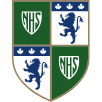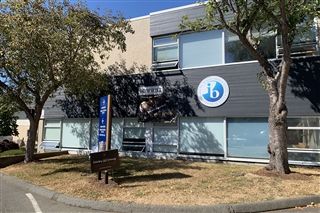The IB Diploma Programme can be extremely confusing, and sometimes reading through the website or even searching up definitions of IB acronyms doesn’t really help clear anything up. So for prospective IB students, I hope this series of articles helps to resolve some questions about what it’s like to be an IB Diploma Programme (DP) student at GNS from a student’s perspective.
At the end of Grade 10, GNS IB students were asked to fill out their course selection. For those that chose full DP, we were enrolling in a two year course, meaning we had to think carefully as to which classes we wanted to take, knowing that we would have to stick with them for two years to qualify to receive an IB Diploma. There were many options offered, most of them divided into Higher Level (HL) and Standard Level (SL) classes.
There are six groups in which all courses are organized: Language & Literature, Language Acquisition, Individuals & Societies, Sciences, Mathematics, and Arts. There is also the Extended Essay (EE), Theory of Knowledge (ToK), and Creativity, Action, Service Program (CAS), all of which will be touched upon in the next article.
To achieve the Diploma, students are required to take six courses, one from each group. However, students can choose to take a second Individuals & Societies or Science course instead of an Arts course. Students must select a minimum three of HL courses.
Besides exploring more content and going deeper into the subject, HL students get to look forward to writing a Paper 1, Paper 2 and Paper 3 during the final exam sessions, while the SL students will only write Paper 1 and 2. HL students also meet seven times every two weeks while SL students only meet five times during that period.
Most students would choose an HL course because they can spend more time on and learn more about topics that are of interest and importance to them but still achieve the requirements to get the Diploma. For example, more scientifically inclined students tend to choose HL Sciences and opt for SL Individual & Societies courses. Kimi De Gea ‘24, a full IB Diploma student notes,
“I really enjoy the level of freedom we have with our course selections. In contrast to last year, we are able to really hone in on the subjects that we enjoy and that will benefit us post-secondary, whatever our future endeavors might be.”
However, as part of the rigorous IB Program, SL courses still cover more content and are assessed according to IB standards, which is higher than provincial standards. Choosing an SL course may mean that you can spend more time on your HL studies, but they in themselves still require effort. Both HL and SL teachers are sure to reinforce the fact that both classes are challenging and in order to perform well, students should be prepared to put forward their best efforts regardless of whether they’re taking SL or HL. Julia Finstad ‘24 a full IB DP student, reflects on the one-of-a-kind educator system at GNS,
“Right now the thing I like most is how much support students can get from all their teachers. There are office hours for many different courses, as well as the flexibility from teachers to be able to meet before, at lunch, or after school!”
Charlotte Quin ‘24, a full IB Diploma student, gives a piece of advice,
“If I had a tip for my classmates, it would be to speak with others about their classes and assignments. It helps us stay on top of things and sometimes we miss information that our friends didn’t and vice-versa. The IB program is rigorous and it is nice to have a community of like-minded people who we can talk with and help each other.”
Embarking on the IB Diploma Programme will be extremely challenging—as many teachers have gleefully pointed out—but it is important to remember that there are many resources available. Because of the tight knit community and readily available support systems, GNS might well be the perfect school to be an IB Diploma Programme student.





